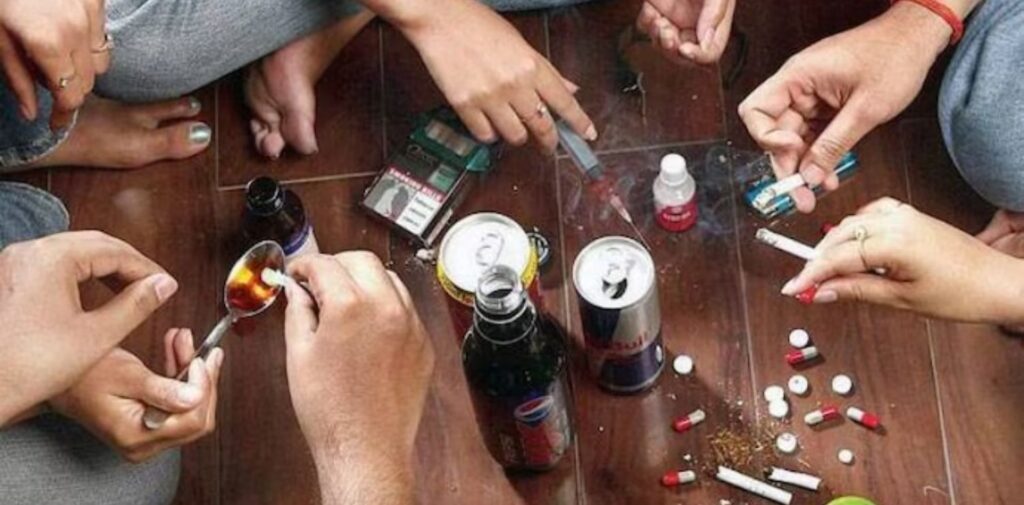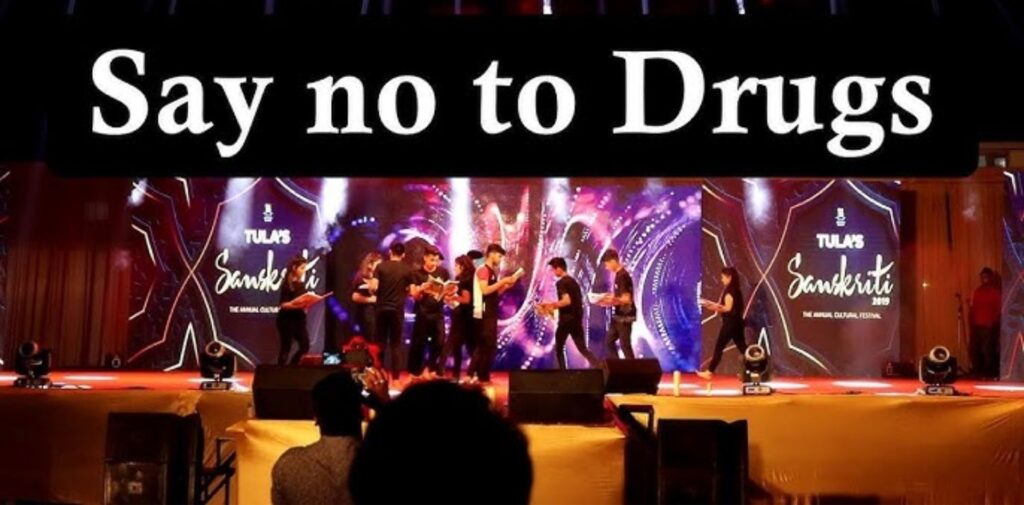In recent years, the landscape of culture of youth in India has transformed dramatically. What once was a vibrant tapestry of traditions, aspirations, and dreams is now often overshadowed by a darker narrative—one that revolves around substance abuse, peer pressure, and the very real dangers that come with it.
The recent incidents of students getting arrested for merely searching for a matchbox to smoke ganja serve as a stark reminder that the youth of India are teetering on the edge of a precipice. This alarming trend not only endangers the future of our young people but also poses a significant threat to the fabric of our society. It is time for a wake-up call—an urgent, red alert for the youth of India to recognize the perils that lie ahead and take action before it’s too late.
The Illusion of Freedom
In an age where information is at our fingertips, and social media glorifies a lifestyle that often includes substance use, the youth of India find themselves in a precarious situation. The allure of freedom—of breaking away from the constraints of traditional norms—has led many young people down a path filled with uncertainty. The normalization of drug use in popular culture, coupled with peer pressure, creates an environment where experimentation seems harmless and even adventurous. However, this illusion of freedom often leads to consequences that are far from benign.

The Dangerous Trend of Substance Abuse
The recent spike in drug-related arrests among students is not merely a reflection of individual choices but a broader societal issue. The roots of this problem run deep, intertwined with the pressures of academic performance, societal expectations, and the desire to fit in. For many students, turning to substances like ganja becomes a misguided coping mechanism, a way to escape from the mounting stress and anxiety of modern life.
But the dangers of this lifestyle are severe. The repercussions extend beyond legal issues; they infiltrate every aspect of a young person’s life. Academic performance declines, relationships strain, and mental health deteriorates. Moreover, the stigma associated with drug use can lead to isolation and despair, further entrenching the individual in a cycle of addiction.
The Arrests: A Wake-Up Call
The recent incidents where students were arrested for merely searching for a matchbox to smoke ganja highlight a critical turning point. It is a grim reminder that even the smallest actions can lead to significant consequences. The police crackdowns, while necessary to combat drug abuse, often create a climate of fear among students. This fear can deter them from seeking help or guidance, trapping them in a downward spiral.
These arrests also reveal a larger systemic failure. Are we doing enough to educate our youth about the risks associated with substance abuse? Are parents, schools, and communities equipped to address this pressing issue? The answer is a resounding no. Instead of fostering open dialogue and understanding, many conversations around drug use are shrouded in stigma and shame, pushing young people further into the shadows.

The Role of Education and Awareness
Education plays a crucial role in combating the rising tide of substance abuse among youth. Schools must implement comprehensive programs that educate students about the dangers of drugs, including the legal implications of their use. This education should extend beyond mere facts and statistics; it should foster empathy, understanding, and open communication.
Moreover, peer-led initiatives can be incredibly effective. Young people are more likely to listen to their peers than to authority figures. Creating safe spaces where students can openly discuss their challenges and choices can be a game-changer. These spaces should promote healthy coping mechanisms and provide resources for those who feel overwhelmed.
The Stigma Surrounding Substance Abuse
One of the most significant barriers to addressing substance abuse among youth is the stigma that surrounds it. Young people who experiment with drugs are often labeled as “troublemakers” or “delinquents,” which can lead to feelings of shame and isolation. This stigma prevents many from seeking help or admitting they have a problem.
It’s essential to shift the narrative surrounding drug use. Rather than demonizing those who experiment with substances, we must understand the underlying issues that drive them to do so. Mental health struggles, trauma, and societal pressures are often at play. By fostering an environment of compassion and understanding, we can create pathways for recovery rather than punishment.
Engaging Families and Communities
The role of families and communities cannot be overlooked in the fight against substance abuse. Parents must be educated about the signs of drug use and be equipped to have open, honest conversations with their children. Communities can play a vital role by offering support systems, mentorship programs, and resources for both young people and their families.
Community organizations can also partner with schools to create outreach programs that address substance abuse. Workshops, counseling sessions, and activities that promote healthy lifestyles can help steer youth away from drugs and towards more positive choices.

The Role of Policy and Law Enforcement
While education and community support are critical, policy changes are also necessary to create a safer environment for youth. Law enforcement should focus on harm reduction rather than punishment. Instead of arresting young people for minor drug offenses, authorities should prioritize education and rehabilitation. Decriminalizing certain substances could also reduce the stigma and allow for more open discussions about drug use.
Additionally, government initiatives aimed at mental health support and substance abuse prevention can make a significant difference. By investing in these areas, we can create a robust safety net for young people, ensuring they have access to the resources they need to thrive.
A Call to Action
As we reflect on the troubling trend of youth substance abuse in India, it becomes clear that we are at a crossroads. The recent arrests of students searching for a matchbox serve as a chilling reminder of the dangers that lurk in our society. It is imperative that we act swiftly and decisively to protect our youth from the pitfalls of substance abuse.
This is not just an issue for individuals; it is a societal crisis that requires collective action. Parents, educators, community leaders, and policymakers must come together to foster a culture of understanding, support, and education. We must empower our youth to make informed choices and provide them with the tools they need to navigate the complexities of modern life.
Conclusion: The Future of Our Youth in India
The youth of India represent the future of our nation. They are the innovators, leaders, and changemakers who will shape our society in the years to come. It is our responsibility to ensure they are equipped with the knowledge and resources to lead healthy, fulfilling lives.
The path forward is not easy, but it is necessary. By acknowledging the reality of substance abuse and taking proactive steps to address it, we can create a safer, more supportive environment for our youth. The time for action is now. Let us heed this red alert and work together to safeguard the future of our young people. Their lives depend on it.




